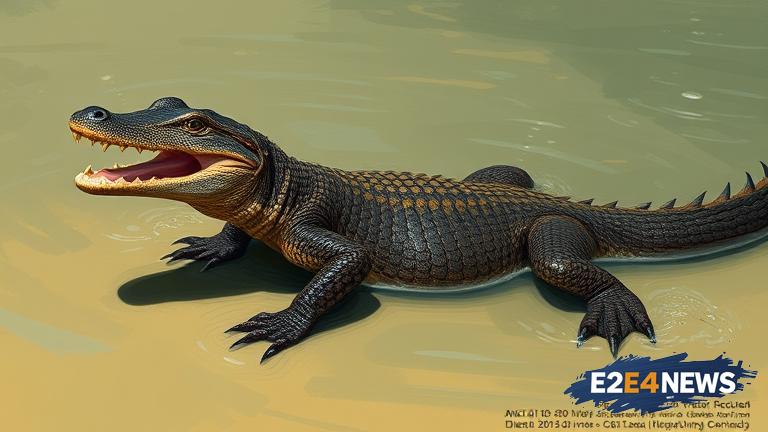A water monitor lizard, a species native to Southeast Asia, has been captured in Florida after being on the loose for two years. The lizard, which can grow up to 7 feet in length, was first spotted in 2020, but had evaded capture until recently. The capture of the lizard has sparked concerns about the impact of invasive species on local ecosystems. Invasive species can cause significant harm to native wildlife and ecosystems, and can also lead to economic losses. The water monitor lizard is just one example of the many invasive species that have been introduced to Florida’s ecosystem. The lizard’s capture was made possible through a collaborative effort between local wildlife officials and residents. The lizard was caught in a residential area, where it had been spotted on several occasions. Residents had reported seeing the lizard in their yards and near waterways, prompting concerns about its potential impact on local wildlife. The water monitor lizard is a carnivorous species that feeds on small animals, including birds, reptiles, and amphibians. It is also known to be a skilled climber and can often be found in trees or near waterways. The lizard’s ability to thrive in Florida’s subtropical climate has raised concerns about its potential to establish a breeding population. If the lizard were to establish a breeding population, it could lead to significant harm to native species and ecosystems. Wildlife officials are working to determine how the lizard arrived in Florida and how to prevent future introductions of invasive species. The capture of the water monitor lizard is a significant victory for wildlife officials, who have been working to combat the spread of invasive species in Florida. However, it also highlights the need for continued vigilance and action to protect native ecosystems. Invasive species can have devastating impacts on local wildlife and ecosystems, and it is essential that we take steps to prevent their introduction and spread. The water monitor lizard’s capture is a reminder of the importance of responsible pet ownership and the need to prevent the release of non-native species into the wild. It is also a testament to the power of collaboration and community engagement in protecting local ecosystems. The capture of the lizard has sparked widespread interest and concern, with many residents expressing relief that the lizard has been caught. However, others have expressed concerns about the potential impact of the lizard’s capture on the local ecosystem. Some have argued that the lizard’s removal could have unintended consequences, such as disrupting the local food chain. Others have expressed concerns about the potential for the lizard to be released back into the wild, potentially leading to further harm to native species. Despite these concerns, wildlife officials are confident that the capture of the water monitor lizard is a positive step towards protecting Florida’s native ecosystems. The lizard is currently being held in a secure facility, where it will undergo further study and analysis. The results of this study will help wildlife officials to better understand the lizard’s behavior and ecology, and to develop effective strategies for preventing the introduction and spread of invasive species. In the meantime, residents are being urged to remain vigilant and to report any further sightings of the lizard or other invasive species. By working together, we can help to protect Florida’s native ecosystems and prevent the spread of invasive species.
